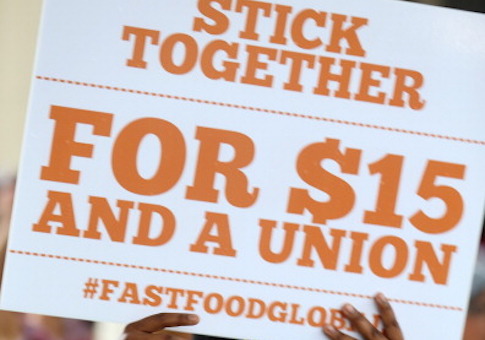Labor groups have enjoyed greater success in organizing campaigns since the Obama administration implemented controversial union election rules that shortened election timelines.
Unions won 72 percent of workplace elections in 2016, a five percentage point increase from 2014 and 13 percentage point jump from 2007, according to the National Labor Relations Board.
Organized labor's strong performance in 2016 coincided with the first full year of operating under new NLRB guidelines that force employers to turn over more employee information to organizers, as well as a sped up timeline that allowed elections to take place in as few as 14 days. The agency debuted the rules at the New York City headquarters of Service Employees International Union in March 2015.
Critics have objected to the new regulations, which they call the "ambush election rules," as tilting the scales of elections in union favor. While labor organizers can spend months and even years lobbying for unionization, employers can be caught flat-footed and have less time to make the case against it.
"The ambush election rule stacks the deck in favor of big labor and takes away the ability for workers to make informed decisions about unionizing," said Heather Greenaway, spokeswoman of the Workforce Fairness Institute. "The sole purpose of this rule was to give labor bosses a tool to help boost sagging union enrollment and refill their depleted union coffers."
The NLRB, a top federal labor arbiter that oversees union elections, also reports a dramatic reduction in the length of union campaigns after the new rules took effect in April 2015. Elections took place a median 23 days from the day unions filed petitions, a 40 percent drop from 2014's 38 days, according to NLRB data.
The difference was especially stark in contested elections, in which employers campaign against unionization and file objections to the process. A contested campaign lasted a median 35 days in 2016—a 50 percent drop from the 70 days that it took in 2007 and 40 percent drop from 2014.
Patrick Semmens, a spokesman for the National Right to Work Committee, said that the dramatic decline in the length of campaigns was to be expected. The most dramatic of which was the difference in timeliness in contested and uncontested cases. Contested cases only took 12 days longer than uncontested cases in which employers do not object to an election. Contested cases in 2007 lasted a full month longer, on average.
"The stats show that the rules are achieving their goal, which is to make it easier to push more workers into forced dues-paying union ranks," he said.
Labor watchdogs have been frustrated by the Trump administration for failing to make appointments to the NLRB, in order to begin rolling back such regulations and restore the longer procedures in place two years ago. Peter List, a former union official who now advises employers on labor matters, said that the agency has yet to become a "priority" for the White House, which is still working to confirm a new labor secretary.
"Unfortunately, as much as employers are hoping for President Trump to nominate an NLRB that is less biased toward employers, it appears that it is not as big a priority for the administration yet," List said.
Democrats enjoy a 2-1 majority on the national board, the agency's top dispute settlement arbiter, which also sets precedent and interprets labor law. While Trump tapped Republican Philip Miscimarra to serve as the board's acting chairman, he has yet to nominate Republican members to fill two vacancies on the board. Former board member Peter Schaumber said that Trump should make the appointments quickly, as it continues to issue controversial decisions, including a 2-1 February decision that allowed Yale graduate students to attempt to unionize.
"I urge President Trump, who has moved quickly to correct many of the misguided policies of the prior administration, to move quickly to name temporary recess appointments to the NLRB," Schaumber said. "That will take time and the process should be begun as soon as possible."
